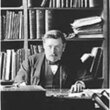A world beneath the sands : the golden age of Egyptology
(Book)
932 WILKI
1 available
Copies
| Location | Call Number | Status |
|---|---|---|
| Central - Adult Nonfiction | 932 WILKI | Available |
Description
More Details
Notes
Also in this Series
Reviews from GoodReads
Citations
Wilkinson, T. (2020). A world beneath the sands: the golden age of Egyptology (First American edition.). W. W. Norton & Company, Inc..
Chicago / Turabian - Author Date Citation, 17th Edition (style guide)Wilkinson, Toby, 1969-. 2020. A World Beneath the Sands: The Golden Age of Egyptology. New York, NY: W. W. Norton & Company, Inc.
Chicago / Turabian - Humanities (Notes and Bibliography) Citation, 17th Edition (style guide)Wilkinson, Toby, 1969-. A World Beneath the Sands: The Golden Age of Egyptology New York, NY: W. W. Norton & Company, Inc, 2020.
Harvard Citation (style guide)Wilkinson, T. (2020). A world beneath the sands: the golden age of egyptology. First American edn. New York, NY: W. W. Norton & Company, Inc.
MLA Citation, 9th Edition (style guide)Wilkinson, Toby. A World Beneath the Sands: The Golden Age of Egyptology First American edition., W. W. Norton & Company, Inc., 2020.






























